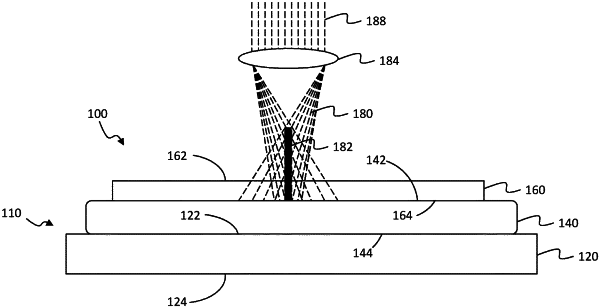| CPC B23K 26/706 (2015.10) [B23K 26/0006 (2013.01); B23K 26/57 (2015.10); B23K 26/702 (2015.10); C03B 33/0222 (2013.01); C03B 33/082 (2013.01); C03B 33/091 (2013.01); C03B 33/102 (2013.01); B23K 2103/54 (2018.08); B23K 2103/56 (2018.08)] | 4 Claims |

|
1. A method of laser processing a transparent material, the method comprising:
positioning the transparent material on a carrier; and
transmitting a laser beam through the transparent material, the laser beam incident on a side of the transparent material opposite the carrier, wherein:
the transparent material is substantially transparent to the laser beam;
the carrier comprises a support base and a laser disruption element, wherein a first layer of material is disposed between the support base and the laser disruption element, and wherein the laser disruption element is a chemically etched glass having a rounded shape with beveled corners disposed over a portion of the support base that is greater than a width of the transparent material and less than a width of the support base, and wherein the laser disruption element has a thickness of from about 0.5 mm to about 3 mm; and
the laser disruption element optically disrupts the laser beam transmitted through the transparent material such that the laser beam does not have sufficient intensity below the laser disruption element to damage the support base; and the laser disruption element comprises at least one of: (i) a diffusive material, (ii) a translucent material, (iii) a material or interface with refractive index inhomogeneities that scatter wavefront of the laser beam.
|